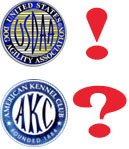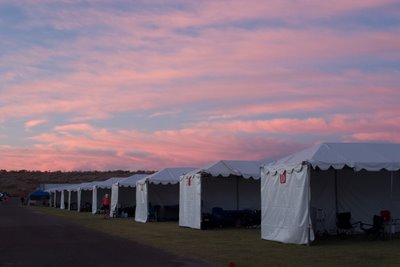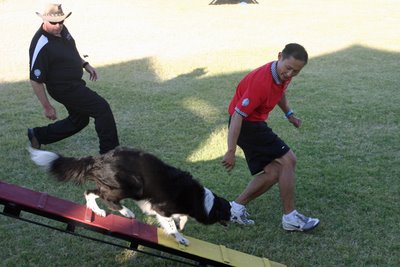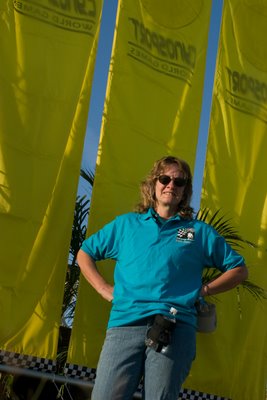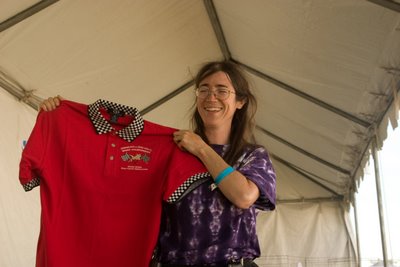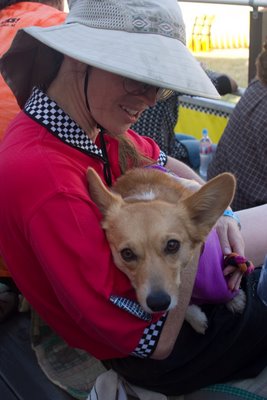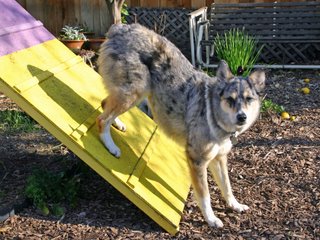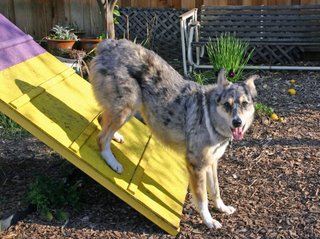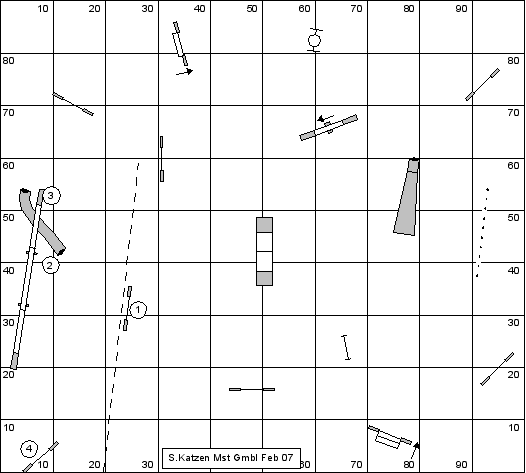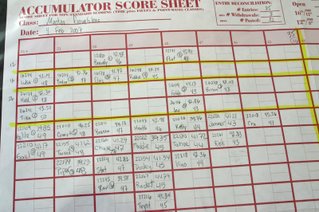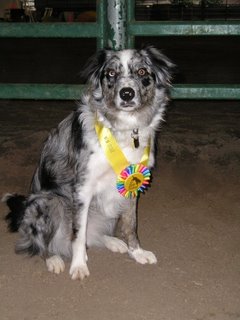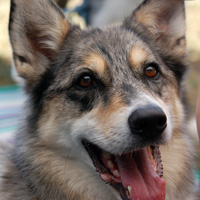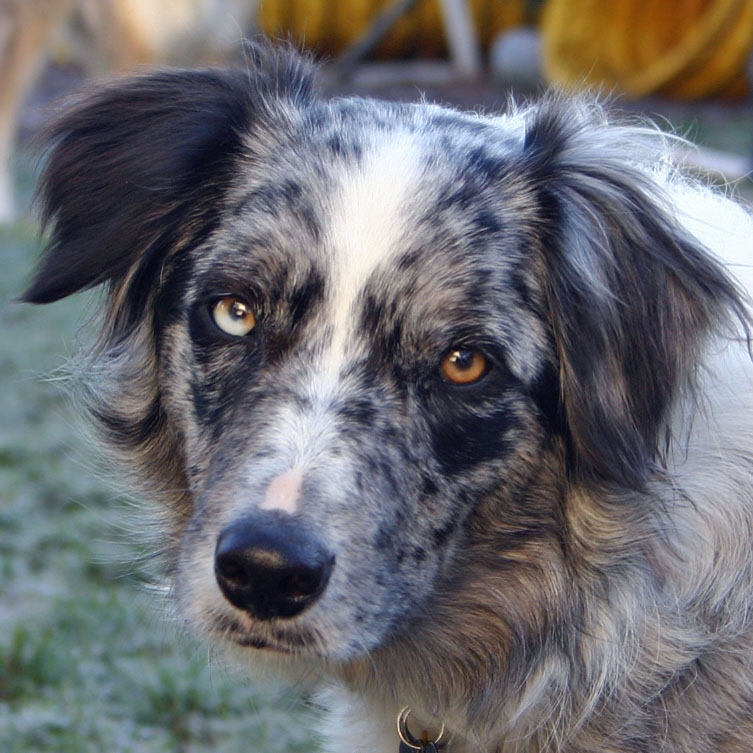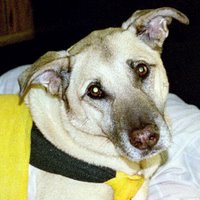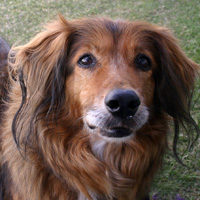Why Are There So Many Agility Organizations?
In my previous post, I listed the various organizations that provide rules under which people can compete and earn titles in dog agility. So, why so many flavors?
Let me ask you this: Why so many types of vanilla ice cream? There's regular vanilla. There's premium vanilla. There's low-fat vanilla. Sugar-free vanilla. Vanilla bean. French vanilla. Vanilla with chocolate chips. Vanilla with cookie dough. OK, which of those would you regularly stock in your freezer? Which would you never touch with a ten-foot set of weave poles? Sure, they're all vanilla, but the differences are important.
The agility organizations are just like that. Sure, they're all dog agility, but the differences are important.
Here are just a few examples (note that I'm not fluent in many of the organizations so most examples are with those I'm more fluent in):
- How often do the rules and/or the equipment specs change? Examples:
- USDAA has a reputation for moving slowly and ponderously, much to many people's frustration (just ask about allowing 24"-spaced weave poles, to name one). ]
- NADAC has a reputation for changing things frequently, seemingly at the drop of a hat.
- Either of those extremes can drive people nuts, especially club organizers and equipment purchasers.
- What equipment is allowed? Examples:
- NADAC has disallowed the teeter-totter and spread jumps as dangerous.
- UKC allows (even requires) the swing plank, sway bridge, and crawl tunnel, which none of the other organizations do.
- USDAA allows double and triple spread jumps.
- Some people don't want their dogs doing certain equipment--or DO want their dogs doing certain equipment.
- What are the specifications for individual obstacles? For example,
- NADAC prohibits slats on the aframe and dogwalk as safety hazards (dogs stub toes, break nails, etc).
- USDAA requires them as safety elements (prevents slipping, gives dogs better grip going up, etc.)
- CPE allows either one but the club is supposed to state it in its premiums. Some people feel that slatless dogwalks confuse their dogs versus the teeter. Some people feel it makes no difference.
- As another example, the length of the yellow zones on the contact obstacles vary. If you have a long-strided dog with a running contact, you might prefer CPE's longer contact zones over USDAA's. USDAA's Aframe was considerably higher (therefore steeper) and NADAC's considerably lower (therefore more running than climbing) than "average" for a long time.
- How obsessive are the rules? For example,
- AKC has become extremely strict (some say unreasonable) in stating exactly when you must remove the leash from your dog at the start line, what you can and can't do at the start line, and what penalties you face if you don't leash your dog immediately at the finish line.
- USDAA is much more relaxed, although all organizations want the dogs under reasonable control.
- How many faults are allowed and what kind? For example,
- in USDAA Jumpers and Standard, your run must be clean to earn a Q, even at the Starters level.
- In CPE Jumpers and Standard, you can earn Qs with a variety of faults, which decrease as you go up in levels.
- USDAA and AKC count runouts and refusals; CPE and NADAC don't.
- USDAA judges the up contacts as well as the down contacts; I think that most or all other organizations don't.
- How high does your dog have to jump?
- All organizations base the jump height on the dog's shoulder height and then some throw in extra qualifiers (length of dog's back versus legs, age of dog, etc.). But where they divide the jump heights and how high those heights are varies considerably.
- For example, my dog Tika must jump 26" in USDAA unless I move her to Performance, where she can jump 22". Boost must jump 22", unless I move her to Performance, where she can jump 16".
- In CPE, Tika's *regular* jump height is 20" and Boost's is 16"; CPE gives two additional tracks of competition, one 4" lower than regular, the other 8" lower than regular. So I could in theory jump Tika at 12" and Boost at 8".
- Some people do not want their dogs jumping the higher required jumps or their dogs simply can't jump the higher jumps, usually for structural reasons (some dogs aren't built for jumping).
- What's the atmosphere like at trials?
- CPE participants generally find that it's a relaxed atmosphere. CPE has so many levels and height groupings and low qualifying requirements that lots and lots of people earn Qs and placement ribbons. In addition, CPE trials tend to be smaller--CPE allows clubs to limit entries.
- USDAA events tend to be intense. USDAA has many fewer levels and fewer height groupings, so placements are harder to come by. USDAA trials can be huge; USDAA does not allow clubs to limit entries. Around here, 3- and 4-ring trials are not uncommon.
- What are the courses like?
- NADAC and ASCA courses tend to be open and flowing.
- CPE courses tend to be small and generally fairly simple. USDAA courses are usually large (using most or all of the 100x100-foot field) and can be technically challenging.
- AKC has a bit of a reputation for tight, choppy courses.
- Teacup courses are designed exclusively for small dogs, who may have a variety of challenges on courses on which much larger dogs also run.
- How fast does your dog have to be?
- CPE's course times are extremely generous.
- USDAA has some classes that require that your dog be in the top 15% in his class to earn a Q.
- NADAC times are extremely tight; your dog had better be fleet of foot, particularly in the upper levels.
- What variety of classes are offered?
- AKC for the longest time offered only Standard and Jumpers; recently added the FAST (sort of gambly like).
- USDAA offers Standard, Jumpers, Gamblers, Snooker, Pairs Relay, and the tournaments Steeplechase, Grand Prix, and DAM Team (although the tournament classes are really just slight variants on the regular 5 classes).
- CPE offers 7 different classes, some of which are similar to USDAA classes and some of which are entirely their own.
- NADAC offers 6 or 7 classes (I've lost track), which are mostly different from those offered anywhere else.
- Some people (like me) love the variety. Some people (particularly those who start in AKC) find the variety intimidating and prefer the clarity of simply numbered courses.
- Are mixed breeds allowed to compete?
- Can you say "AKC" (not)? Other organizations don't care what your dog looks like, as long as she's healthy and sound and old enough.
- Do you want to compete at the top of the sport, possibly including internationally?
- AKC's program is affiliated with the FCI for their world championships.
- USDAA's program is affiliated with the IFCS, lesser-known and not [yet] as prestigious.
- CPE has no international affiliation. It's not a particularly competitive venue. Only a few of those who are at the level where they could be finalists at AKC or USDAA national events will compete in CPE trials.
- Some people feel that competing against the best that the sport has to offer helps them to improve their own performance. Others prefer not to have to compete against those who have made agility competition their primary focus.
Labels: agility the sport, AKC, CPE, NADAC, USDAA
Complete list of labels
